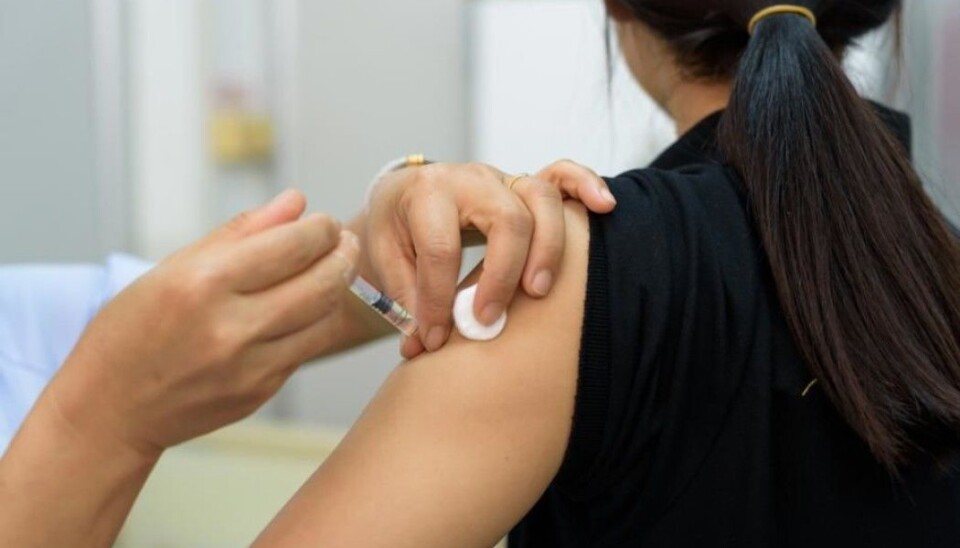
Women are protected against cervical cancer 12 years after getting the HPV-vaccine, according to large Nordic study
The once controversial vaccine appears to have a much longer effect than what has been documented so far.
The HPV-vaccine, also known by the brand name Gardasil 9, protects against certain types of human papilloma virus that can lead to cancer or genital warts.
“We have followed a large number of women who have received the vaccine, to look at the lasting effect of the protection against cellular changes in the cervix caused by HPV type 16 and 18”, chief physician Susanne Krüger Kjær says to Videnskap.dk.
“For at least 14 years after the vaccination there were no cellular changes”, she says.
The researchers have monitored the results from the women’s routine cancer screenings and have measured no cellular changes for 12 years. After 14 years, this appears to hold stand – but the data only support drawing a conclusion for the first 12 years.
The researchers have also measured the antibodies created against HPV. The vaccine produced stable levels of antibodies for at least 14 years, they conclude.
Screening still important
There is solid scientific evidence for the effect of the HPV-vaccine, but it is still important to document how long the effect lasts, according to Kjær, who is also a professor at the Danish Rigshospitalet.
Even if the vaccine is effective and long-lasting, it’s important that women continue to go for regular cervical cancer screenings. The vaccine only covers changes caused by HPV 16 and 18 – which cause about 70 per cent of all cases of cervical cancer. This means that 30 per cent of the cases are caused by other types of the virus that the vaccine does not cover.
Women in Norway are advised to go for screenings every three years, between the ages of 25-69.
Screening against cervical cancer started in most of the Nordic countries in the 1960s and has shown great effects in reducing the number of cases. Mass screening against cervical cancer was established nationally in Norway in 1995.
70 per cent of cervical cancer cases will disappear
A summary of 65 studies on the HPV vaccine, published in the Lancet in 2019, found that the vaccine significantly reduced the presence of HPV 16 and 18 in the countries where the vaccine was being implemented. For girls aged 13-19 years, the reduction was as much as 83 per cent.
Norway started offering the HPV-vaccine to girls aged 12 years in 2009. Starting from the fall of 2018 the vaccine is also offered to boys.
“We can expect to see that 70 per cent of cervical cancer cases will disappear”, said Mari Nygård, researcher at the Cancer Registry of Norway, to Dagens Medisin.
She predicts the changes will appear in 10-15 years time.
While both Denmark and Norway initiated routine vaccination against HPV for 12-year-old girls in 2009, Denmark also started offering free-of-charge vaccinations for older age groups the year before. This was not done in until Norway eight years later, in 2016.
A recent study conducted by among others Nygård found that the reduction in genital warts as a consequence of HPV viruses was greater in Denmark compared to Norway. The study concludes that Norway’s decision to only vaccinate 12-year-old girls in 2009 has postponed positive effects on reducing HPV-related disease by at least a decade.
Financed by the industry
The new long-term study was financed by the company behind the Gardasil-vaccine, Merck Sharp & Dohme Corp. This could give wind in the sails to conspiracy theories, warns chief physician Karsten Juhl Jørgensen, director of the Nordic Cochrane Centre at Rigshospitalet in Copenhagen.
The results of the study, however, are not revolutionary, according to Jørgensen. We’ve known the vaccine works – this is just a slightly longer follow up than has been seen previously.
The pharmaceutical industry is the only body able to afford these kinds of large studies, writes videnskap.dk.
Chief physician and professor Jan Blaakær says that even if it is not optimal, there is no reason to believe that the finances have influenced the results.
“It would have been more ideal if the industry had not financed this. But they can’t go in and change or cheat the data”, he says.
References:
Susanne K. Kjaer et al: «Final analysis of a 14-year long-term follow-up study of the effectiveness and immunogenicity of the quadrivalent human papillomavirus vaccine in women from four nordic countries», The Lancet, 2020, DOI: 2020.100401
The FUTURE II Study Group: «Quadrivalent Vaccine against Human Papillomavirus to Prevent High-Grade Cervical Lesions», The New England Journal of Medicine, 2007, DOI: 10.1056/NEJMoa061741
Oruma, Madleen et al, The impact of HPV multi-cohort vaccination: Real-world evidence of faster control of HPV-related morbidity, Vaccine, 2020, https://doi.org/10.1016/j.vaccine.2019.12.016































